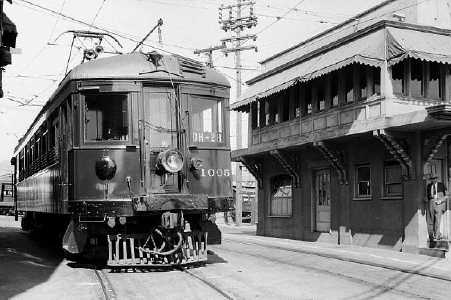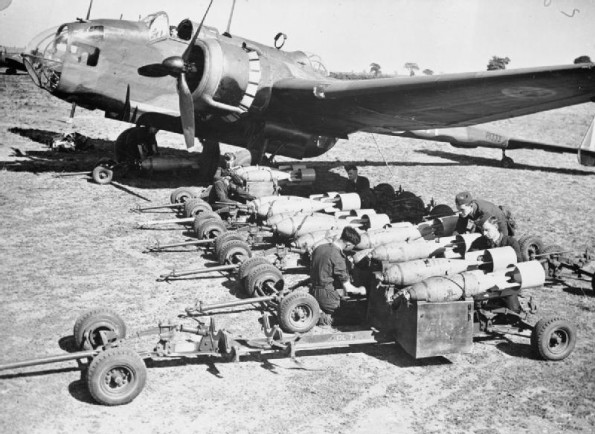Saturday 17 August 1940
Germany, having repeatedly warned these [non-combatant] States not to send their ships into the waters around the British Isles, has now again requested, in a note, these governments to forbid their ships from entering the Anglo-German war zones. It is in the interest of these States themselves to accede to this German request as soon as possible. The Reich Government wishes to emphasize the following fact: The naval war in the waters around the British Isles is in full progress. The whole area had been mined.This is a highly risky strategy, as President Roosevelt is just waiting for any excuse to enter the war. A few sinkings of US ships would help him to build a case. However, focusing all of the Reich's resources in the air and on the sea in one focused direction makes more sense strategically than a one-armed attack by the Luftwaffe against the RAF that it basically (especially as recent events have shown) cannot win.
Hitler justifies this as retaliating against a "British hunger blockade against German women and children." This has more resonance than it might because of recent comments by US Ambassador to Belgium and Luxembourg (since recalled) on the same theme. One can view this change in strategy as a clear sign that the German high command views the Battle of Britain as going poorly.
In terms of the air campaign, it is a light day despite perfect flying weather. Both sides have taken huge losses and can use the rest. This gives the staff of the numerous RAF airfields devastated in recent days a chance to clean up the debris and level the runways.
There are scattered intrusions by lone Luftwaffe bombers or small groups of bombers. A Junkers Ju 88 from 2./NJG 1 gets lost and is shot down off Spurn Head at 03:00. Another plane is shot down in the Channel. The Luftwaffe drops propaganda leaflets at Welshpool. A few scattered "Freie Jagd" missions by Luftwaffe fighters result in dogfights and victories by JG 51.
The Luftwaffe damages British freighters St. Patrick and Yewkyle in the southern entrance to the Irish Channel (St. George's Channel).
After dark, the Luftwaffe bombs East Suffolk, Warwickshire, Staffordshire, Derbyshire. Liverpool, Coventry, and Birmingham receive attention, with damage to the Liverpool docks. These are a prelude to the "Moonlight Sonata" raids of November. The Bristol Aeroplane Company at Filton and the Avonmouth docks receive their usual bombing raids from over a dozen Heinkel He 111s of II,/KG 27. Overall, bombing accuracy is poor, a problem that afflicts both sides at night, but the Luftwaffe is working on that with new equipment (see below).
 |
| King George VI, left, and Dowding during the Battle of Britain. |
American Pilot Officer William Fiske perishes of wounds suffered on the 16th. He is the only American fighting in the RAF to perish during the Battle of Britain and is buried in St. Paul's Cathedral.
RAF No. 1 Squadron, staffed by Canadian pilots, becomes operational. RAF No. 310 Squadron becomes operational, staffed by Czechoslovakian pilots, at RAF Duxford. With RAF Tangmere badly damaged in recent days, RAF No. 602 Squadron is moved nearby to Westhampnett.
 |
| Wendell Willkie campaigning in his hometown of Elwood, Indiana, on 17 August 1940. |
Another Bomber Command raid, on Boulogne, drops 3 tons of incendiaries and other bombs. There also are the usual raids on individual Luftwaffe airfields throughout northwest Europe.
Battle of the Atlantic: British aircraft carrier HMS Hermes, which was in a collision with armed merchant cruiser HMS Corfu on 10 July, is in Simonstown, South Africa for repairs. The collision has lost the forward 30 feet of its bow. The repairs are scheduled to take months.
Convoy FN 255 departs Southend, Convoy MT 143 departs Methil, Convoy FS 255 departs from the Tyne.
British submarine HMS Utmost (N 19, Lt. John H. Eaden) and corvette HMS Coreopsis (K 32, Lt. Commander Alan H. Davies) are commissioned.
Battle of the Mediterranean: The British Admiral Cunningham sends a large task force, codename MB 2, centered around battleships HMS Malaya, Ramillies and Warspite and cruiser HMS Kent to bombard the Italian at Bardia, Libya (including nearby Fort Capuzzo). The bombardment commences at 06:58 and lasts for 22 minutes. Force A has the Warspite and Kent, and Force B has the Malaya and Ramillies.
The Italian artillery cannot reach the British battleships, which can stand far offshore and fire with impunity. The Italians under Marshal Graziani essentially abandon the fort after the attack. The Regia Aeronautica attacks the British flotilla without success and loses several planes.
British submarine HMS Rorqual lays mines off Cyrenaica.
It is a quiet day in Malta. The local government via the War Office authorizes increased local ground forces composed of volunteers, with tighter supervision. They also are unpaid but full members of His Majesty's Armed Forces (else they could be shot as spies or partisans after an invasion). Governor-General Dobbie also urgently requests supplies.
 |
| The 18 August 1940 papers are full of news of Wendell Willkie's acceptance speech, Hitler's blockade of England, and a "Gay Pageant" in Chicago. |
Winston Churchill has a somewhat unrealistic view of what could have been accomplished in British Somaliland. The Italian forces outnumber the colonial British forces, buttressed by a few elite formations such as the Black Watch, by a huge amount, and they also are better equipped with tanks, artillery, and aircraft. Churchill wants a victory or at least a successful defense under impossible circumstances that, of course, are part of his own creation.
After hearing of Churchill's attitude, Middle East Commander General Wavell responds:
A bloody butcher’s bill is not the sign of a good tactician.This is not a very political statement, and Wavell must understand this when he makes it.
Wavell, though, is absolutely correct and has handled the campaign with extreme competence (British casualties are minimal), but this incident starts turning the tactically challenged (but undeniably inspirational) Churchill against the extremely competent (but strategically overwhelmed) General Wavell. There are many in the British government, including Sir Alan Brooke, who view Churchill as a loose cannon when it comes to military strategy, and this is an example. To his credit, Churchill retains General Wavell in command despite the strategic setback, showing a high degree of maturity and even wisdom.
What is ironic given Churchill's petulance is that the British defeat in British Somaliland could have been far, far worse. There are strong indications that the Italian aggressors have held back there (and perhaps at Malta) in hopes that a peace deal under discussion quietly at the Vatican might bear fruit.
 |
| President Roosevelt and Mackenzie King of Canada on 17 August 1940. |
US/Canadian Relations: President Roosevelt and Prime Minister William Mackenzie King meet at Ogdensburg, New York. They sign an agreement - the Ogdensburg Agreement - for a Permanent Joint Board on Defense.
British Government: The Duke of Windsor, safely out of Europe, is sworn in as Governor-General of the Bahamas. He remains under deep suspicion by other elements of the British government for alleged pro-German leanings.
US Military: Destroyers USS Wake and Wainwright continue their "Show the flag" mission in South America, departing Bahia, Brazil for Pará, Brazil.
Greece: The country partially mobilizes its armed forces in response to recent Italian provocations such as the sinking of the light cruiser Helle (Elli). A Greek investigation reveals fragments of an Italian torpedo in the wreckage of the Helle.
Afghanistan: The Afghanistan Parliament begins.
 |
| The "War of the Lapel Badges" breaks out in Luxembourg (Federal Archive, Christian Minzlaff, August 1940). |
France: The occupation authorities requisition ("donate") all private watercraft.
American Homefront: Wendell Willkie formally accepts the Republican nomination for President in his hometown of Elwood, Indiana. He decries the "unfruitful political adventures" that led to France's downfall.
 |
| A passenger train to San Francisco at the corner of 40th and Shafter, Sacramento, California on 17 August 1940. |
August 1, 1940: Two RN Subs Lost
August 2, 1940: Operation Hurry
August 3, 1940: Italians Attack British Somaliland
August 4, 1940: Dueling Legends in the US
August 5, 1940: First Plan for Barbarossa
August 6, 1940: Wipe Out The RAF
August 7, 1940: Burning Oil Plants
August 8, 1940: True Start of Battle of Britain
August 9, 1940: Aufbau Ost
August 10, 1940: Romania Clamps Down On Jews
August 11, 1940: Huge Aerial Losses
August 12, 1940: Attacks on Radar
August 13, 1940: Adler Tag
August 14, 1940: Sir Henry's Mission
August 15, 1940: Luftwaffe's Black Thursday
August 16, 1940: Wolfpack Time
August 17, 1940: Blockade of Britain
August 18, 1940: The Hardest Day
August 19, 1940: Enter The Zero
August 20, 1940: So Much Owed By So Many
August 21, 1940: Anglo Saxon Incident
August 22, 1940: Hellfire Corner
August 23, 1940: Seaplanes Attack
August 24, 1940: Slippery Slope
August 25, 1940: RAF Bombs Berlin
August 26, 1940: Troops Moved for Barbarossa
August 27, 1940: Air Base in Iceland
August 28, 1940: Call Me Meyer
August 29, 1940: Schepke's Big Day
August 30, 1940: RAF's Bad Day
August 31, 1940: Texel Disaster
2020

No comments:
Post a Comment